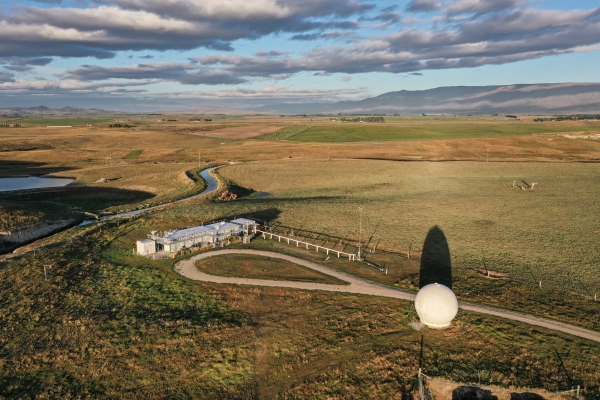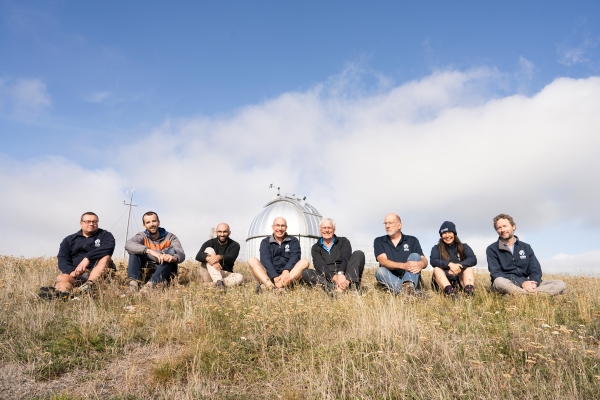A Central Otago scientific research station with a globally revered reputation is marking its 60th anniversary.
NIWA’s Lauder Atmospheric Research Station is almost exactly halfway between the equator and the South Pole, about 36 km from Alexandra, and deliberately situated in a remote, unpopulated area to take advantage of the clean air and clear skies.
It is the workplace of nine NIWA scientists and technicians whose work measuring gases in the atmosphere contributes to global understanding of climate change, UV and ozone research. Staff operate and maintain an array of instruments and analyse the data they generate that is then contributed to several international networks.
These networks combine data from similar sites around the world, but Lauder remains the gold standard because it is often one of few stations making measurements in the Southern Hemisphere.
Lauder’s reputation as an internationally significant and much respected scientific facility stems from the length of time consistent measurements have been made at the site and what they have revealed about our changing climate. Today its focus is largely on measuring greenhouse gases in the atmosphere that contribute to climate change and UV research.
Atmospheric scientist and Lauder group manager Dr Richard Querel says the instruments used to measure ozone, UV radiation, methane and carbon dioxide enable scientists to see small trends over several decades.
“If you don’t have any data to start looking at something then you’re speculating. If you’re going to have data then it might as well be high quality, traceable, well calibrated and comparable to other sites. That’s all the bread and butter stuff we do here.”
Dr Querel says the importance of having these long time series has been amplified since the advent of satellites which provide global coverage. While satellites can measure anywhere, they may only be up for a few years and there may be a gap of several years before another one is launched. So continuous ground-based measurements can tie these individual satellites together.
“The time series are also used for model validation – the global climate models need data for comparison.”
Parallel measurements are made at Arrival Heights in Antarctica, and the Lauder staff maintain those instruments during annual visits to the ice.
Lauder began in 1961 as a station measuring auroral activity between 100 and 400 km high to better understand its effects on compass readings and radio signals. In the late 1970s interest in upper atmospheric research diminished and was replaced by research into the stratosphere (15-50 km high).
Scientific research conducted at Lauder was crucial in the efforts that led to the discovery of the Antarctic ozone hole in 1985 and the 1987 signing of the Montreal Protocol – a successful international treaty that resulted in the phasing out production of ozone depleting substances.
In the past few years Lauder has undergone a modernisation programme to ensure technological advances are used to their fullest ability.
Dr Querel says in previous years technicians made most of the components for the instruments on site but today most of the hardware is readily available.
“But when you’re building something like a lidar you buy a commercial laser that’s meant for etching, not for shining into the sky to be absorbed by ozone. That means you end up using commercial goods but you put them together in your scientific way.”
One of the most recent staff additions to Lauder is Dr Alex Geddes. Originally from the UK, he says Lauder is “world famous” in atmospheric science circles.
“It is like gold dust – there’s not many really good measuring sites in the Southern Hemisphere and Lauder is the most well instrumented and most highly regarded of them. You know that if we see changes happening in the atmosphere at Lauder they’re definitely real and a big deal.”
He has played a central role in the modernisation programme and introduction of new instruments to extend research opportunities. “There is so much going on here and we have to keep advancing.”
One of the new projects on the horizon is MethaneSAT – a joint US-New Zealand space mission that will see a satellite launched next year to locate and measure methane from human sources around the globe.
Dr Geddes says the objective is look at methane leaks across the world at very high resolution, particularly from oil and gas. “We don’t have much oil and gas in New Zealand so we want to look at agricultural methane emissions which account for about 75% of all methane emitted here.
“We’ll be measuring average concentrations of methane in the air column and using some fantastic modelling too work out where the air has come from and assign it to the source of those emissions.”
Dr Geddes says the information could be used to design an emissions reduction strategy. “New Zealand is an ideal test bed for this technology.”
While technology is changing how things are done at Lauder, there are some things that have remained virtually the same. A weekly upper-air sounding balloon is launched each Tuesday conditions permitting, and manual weather observations are also recorded weekly to ensure the integrity of the time series.
And when the skies are clear, passers-by may see a thin green beam shooting into the night sky as the aerosol lidar heads to infinity.
Discover more about NIWA's Lauder Atmospheric Research Station here: https://bit.ly/33iBNfv



